The current Covid-19 policy administrators in Moscow are of the same academic generation but they have trained as doctors; Volchkov is a geneticist. They have spent their formative careers inside Russian institutions; Volchkov spent more than ten years in the US, at the University of Chicago then at Harvard.
He has not suffered from the inferiority complex which has been the precondition for success in the US careers of Konstantin (Keith) Gessen and other Russian graduates from Harvard. Volchkov's analysis of the US science market and his reasons for returning to his Russian laboratory are described here.
"There's always someone in America," Volchkov says, "who can find better funding than you. There's always someone better than you. And Russia is only at the stage of the emergence of something more or less wealthy and constructive than the use and trade of natural resources. Even the janitor has already realized, and not just the economists in the government, that it is time to create high-tech companies that can make a product that is not related to natural resources. This was also one of the drivers of my move [back to Russia]. I saw that the situation with science has improved slightly. Of course, when I returned to Russia, everything was different. But ten years in America hardens you. These are difficult years. You break yourself, rebuild yourself, become flexible, purposeful. If you don't, you are lost. If I hadn't gone there, I wouldn't have become what I am now."No repatriating Russian is as clear-eyed on what has been left behind in the US - and what lies ahead for Russia.
Volchkov is the head of the Genome Engineering Lab (GEL) in Moscow; it is one of more than fifty laboratories which are part of the Moscow Institute for Physics and Technology (MIPT). The institute is the third-ranked science teaching university in Russia.
Volchkov specializes in the technology known as CRISPR-Cas9. The first acronym stands for clustered regularly interspaced short palindromic repeats; the second for CRISPR-associated complex protein 9; for meaning and diagrams, click to open. The purpose of the technology is to engineer or edit genome sequences in living organisms, in the short run for defence against deadly viruses, and in the longer term to remodel medical diagnostics and the treatment of serious diseases; for background, read this.
The commercial applications for the CRISPR technology have already been recognized in the food and farm industry; for example, to engineer probiotic cultures like yoghurt and to immunize them when they are produced industrially against infections. The technology is also being used in crops to enhance yield, drought tolerance and nutritional value; and to modify yeasts for production of biofuels. CRISPR has also been used, reportedly, to neutralize mosquitoes so they cannot transmit diseases such as malaria. The rate of return calculation on investment in being first to patent these applications, then to market them, is obvious.
"In the US and China," Volchkov told an interviewer last year, "developers of these technologies are already actively attracting investors. Now in the field of genome editing, there are real competitions that resemble the space race between the USSR and the United States that took place in the 50s and 70s of the last century. Only the first space flight and satellite launches have been succeeded now by genetic experimentation, and in the race to be first China has taken the place of the Soviet Union. Recently, the Chinese first performed editing of the human genome using the acclaimed CRISPR/Cas9 technology. "In this interview, published on July 6 in Izvestia, Volchkov presents the evidence for his conclusion that a second wave of the Covid-19 pandemic is no longer possible in Moscow because, he argues, immunity has already reached between 40% and 60% of the population, and continues to grow as rapidly as testing reaches the limit of the city's population.
"The political stakes have also been controversial, the money rewards possibly fraudulent, as revealed in that first Chinese case, the affair of the gene-edited fertilization experiments of He Jiankui.
The Swedish research paper on T-cell immunity to which Volchkov refers can be read separately here. According to the authors, "we systematically mapped the functional and phenotypic landscape of SARS-CoV-2-specific T cell responses in a large cohort of unexposed individuals as well as exposed family members and individuals with acute or convalescent COVID-19." By "large cohort", the Swedes meant a sample of 208. Within this sample, 31 had mild symptoms of Covid-19 infection but were not hospitalised; another group of 30 were family members exposed to infected individuals but not testing positive or showing symptoms; 80 were selected from voluntary blood donors without Covid-19 testing; 40 had been hospitalised for low-level treatment; 27 required intensive care.
The British research which Volchkov cites can be read here. The sample for this research was smaller — 63 hospital-treated Covid-19 patients.
- Pavel Yuryevich, from your point of view, how many people in Moscow already have immunity to SARS-CoV-2?
Recently, an article was published by Swedish scientists who conducted a study of T-cell immunity, the results which I personally have long been waiting for. They analyzed a large number of biological samples by conducting an expensive ELISPOT analysis (Enzyme-Linked ImmunoSpot - T-cell detection method). It turned out that even those who did not have IgG antibodies had T-cell immunity. And there are two to three times more such people in the population than those with antibodies.- What does this mean?
If in Moscow 20% of people are officially recorded with high titers of IgG antibodies, then you can safely add another 20%-40% to this figure. It turns out that about half of Moscow residents are immune to coronavirus. They will not get sick anymore.- Recently, articles appeared that showed that antibodies are lost ...
And that's fine. They ought to be lost. This always happens. There is a half-life of IgG, IgM, IgA antibodies. Their volume in the blood begins to fall six months to a year after meeting with the infection. There are so few of them that their number is impossible to detect by any test. What is the purpose of antibodies? Here the virus flew into the respiratory tract, infected a group of cells, created a small local focus (with a mild course of the disease). The immune system recognized these cells and localized them - it is like the city of Wuhan that was closed in China. It turns out that a large number of antibodies do not seem to exist, but the immunity has formed and worked. However, it is concentrated in T- and B-memory cells. When the infection again occurs to a person, the immune system recognizes it, and the cells will begin to produce antibodies.- Does it make sense then to test for IgG antibodies?
There is. This test is cheap and gives us a cut-off. This cut-off now is 20%. So we can multiply this amount by two to three times. It's hard to say the exact number; for this you need to conduct a large-scale study using expensive ELISPOT analysis, as the Swedes did.- Is it possible to say that the "herd" immunity that everyone has been talking about for so long has already taken shape in Moscow?
For the multi-million city, today's figures in the region of 700 new infected cases per day indicate that [immunity] has formed. If we really had only 20% of the residents with immunity, then with open restaurants and shops, we would expect a much larger number of infected people.- But after all, at this figure (700-plus people per day) you can remain for a long time. Or not? What is your prediction?
I think this figure will now begin to decline and will reach zero at the end of August. It is clear that for quite a long time in the capital there will be cases imported from regions that which began to "pick up" the coronavirus relatively late in the day.- So there won't be a second wave?
For Moscow it is already impossible. Now people who have formed natural immunity in the capital are 40%-60%. If the dynamic continues, their number will increase by the end of August to 80%-90%.- And in other cities of Russia, is the second wave a possibility?
Only in those which are quite isolated, and where there has been an extremely low level of infection. In the big cities, definitely not. If you have already burned the grass, then the burned-out areas cannot catch fire again. Do you know how firefighters fight fire? They take and burn the front of the strip to stop the fire. This strip is our immunity buffer.- But what about the fact that the virus mutates and the body may simply not recognize it?
In any case, it does not mutate very quickly. Even the seasonal flu virus needs several years to re-infect you. And then in the event that part of its segments — and the flu has eight of them — will be re-sequenced, that is, replaced by parts from another influenza virus. Coronavirus is single-segment - it cannot change in that way.- But can it recombine?
Maybe. But this event is much rarer. It must take at least a couple of years for it to be able to return and cause you some kind of pathology. And still it won't be comparable to the first time. Somehow at least the immune system recognizes it, which means it will work. And a secondary immune response will develop.- The war between supporters of the natural versus synthetic origin of the coronavirus continues on the pages of the media, on social networks and blogs. What can you say at the moment when so many articles about its structure have been published?
I came to the conclusion that the probability of the virus overcoming the interspecies barrier without human help (for example, accidentally eating a bat which is carrying SARS-CoV-2) is much less than the probability that there was help. By help, I mean prolonged cultivation of the virus in the laboratory, the introduction of amino acid modifications, experiments to infect human cells if possible. All this is described in the same famous article of 2015 (Nature magazine, November 9, 2015). Also in support of this hypothesis is also the location of the city of Wuhan.
- What do you have in mind?
Wuhan is located in the very centre of China. Bats are not found there. They live in the south, in Yunnan, on the border with Vietnam. It was there that they were caught to isolate new coronaviruses, which are now stored in the collection of the Wuhan laboratory. Although theoretically it can be assumed that they were brought thousands of kilometres to eat.- But is that possible?
Yes, perhaps. But in practice, traditional cuisine is therefore considered traditional because its menu contains local species of animals. If the virus 'jumped" on to a person when it was eaten, the virus would be found in Yunnan, on the border with Vietnam, Laos and Myanmar. From there the epidemic would have started.- Speaking about the origin of SARS-CoV-2, you can only deal with probabilities?
I'm afraid so. In [the virus genome] sequence it is not written: "I am made synthetically." There are no obvious 'donkey ears'- traces of a genetic engineered structure. But there is a hint of it. This is the famous furin insert, about which much has already been said.THE FURIN CONTROVERSY
- But could it find itself in the genome of the virus during recombination?
It could. However, the probability of this event is greatly increased if you carry out amino acid mutations in the thousands. And the fact that American and Chinese scientists did this is proved by the 2015 article. If you look at the publications of these scientific groups, it becomes clear that they worked very actively, intensively, and for a long time with these viruses. In addition, the Chinese have a large library of coronaviruses, where the most genetically close sample of RatG13 has been discovered at the moment. It was brought to the Wuhan Institute of Virology from Yunnan Province in 2013. During the seven years when it was cultivated, passivated, it could naturally acquire a large number of mutations. In addition, science has advanced in this regard over the past 10 years. We live in an era of synthetic biology where some parts you can synthesize de novo and then provide seamless insertion of such a synthetic part into the genome.- That is, ten years ago, looking at the genome, would you be able to say definitely what is inserted there?
Exactly. And now there are technologies of extended genetic synthesis, when thousands of nucleotides can be synthesized. You simply send the letter sequence to a special company that synthesizes it and sends it back. The possibilities are huge now. In this way, whole libraries of new coronaviruses can be generated. Suppose there are 10 million of them there. And then you can choose the most promising one from them, assemble it using the reverse genetics method and test for the ability to infect human cells.- That is, from your point of view, the probability that the virus has leaked from the laboratory is quite high?
Yes. An argument in favour is also that coronaviruses were not considered particularly dangerous for some time. And it was possible to work with them at the second level of protection [there are four levels; the third and fourth levels, according to the American classification, are especially dangerous]. Actually, this is understandable, because the initially isolated viruses could not pass from an animal to a person (to overcome the interspecies barrier) and, accordingly, from person to person.- That is exactly what was claimed at the very beginning of the pandemic...
At the second level of protection, it could easily fly out and infect the scientist. And what's important is that it's impossible to see right away. The funny thing is that the one who brought this virus out of the laboratory did not even understand that he did it. And may not have understood it even now."This interview with Volchkov was re-published on July 6 on Stopcoronavirus.rf, an official website of the Russian Ministry of Health and Rospotrebnadzor, the state consumer health and safety agency. The day after, and without referring to Volchkov, this report appeared: "Russian scientists warn against drawing hasty conclusions about the formation of immunity to Covid-19. The data on the formation of immunity after the new type of coronavirus infection disease are insufficient to assess the layer of people protected from reinfection and the duration of protection. This warning was reported to the website Stopcoronavirus.rf by Alexander Gorelov (right) on Monday. Gorelov is the deputy director for research at the Central Scientific Research Institute of Epidemiology of Rospotrebnadzor."Earlier in the media, Swedish scientists published data on the study of T-cell immunity. It turned out that those who did not have IgG antibodies had T-cell immunity, and such people in the population numbered two to three times more than those who had antibodies. The fact identified in a separate original study of the formation of the so-called memory T cells in cases of Covid-19 infection, even in the absence of antibodies in general, is encouraging, but it is not necessarily indicative of the development of robust protection against re-infection. So far, no one knows exactly all the elements of the immune response and immune memory which could provide long-term resistance to a new coronavirus infection", Gorelov said.
He explained that an individual has two types of response to any virus: the production of virus neutralizing antibodies and the T-cell response. "These are two parallel response paths, and one path usually does not exclude the other. Test systems that allow us to judge the T-cell response against Covid-19 are not yet available in Russia; in the rest of the world they are rare and extremely expensive. No one can say with confidence that such a number of people have T-cell immunity," the scientist noted, stressing that the Swedish sample is too small to extrapolate the data obtained to the population of Sweden or to other countries in the world.
To test scientific hypotheses, additional confirmations and refinements are required. "It is not yet known exactly how long antibodies against the new coronavirus persist after the disease, and how many of them are antibodies with virus neutralizing effects. The same applies to the efficacy and persistence of the T cell response and the T cell immune memory," Gorelov said. "The contribution of each immunity link to preventing repeat disease remains to be clarified. It is premature and unjustified to draw quick conclusions and forecasts, having data from only one article."
A further correction of evidence on the prevalence of antibodies has been published on July 6 in The Lancet; this is based on a sampling across Spain of almost 36,000 households, 61,075 individuals.
Two forms of blood testing were used. The outcome was the finding of just 5% in the sample with antibodies. "The majority of the Spanish population is seronegative to SARS-CoV-2 infection, even in hotspot areas. Most PCR [point-of-care antibody test] confirmed cases have detectable antibodies, but a substantial proportion of people with symptoms compatible with Covid-19 did not have a PCR test and at least a third of infections determined by serology were asymptomatic. These results emphasise the need for maintaining public health measures to avoid a new epidemic wave."
@bears_with
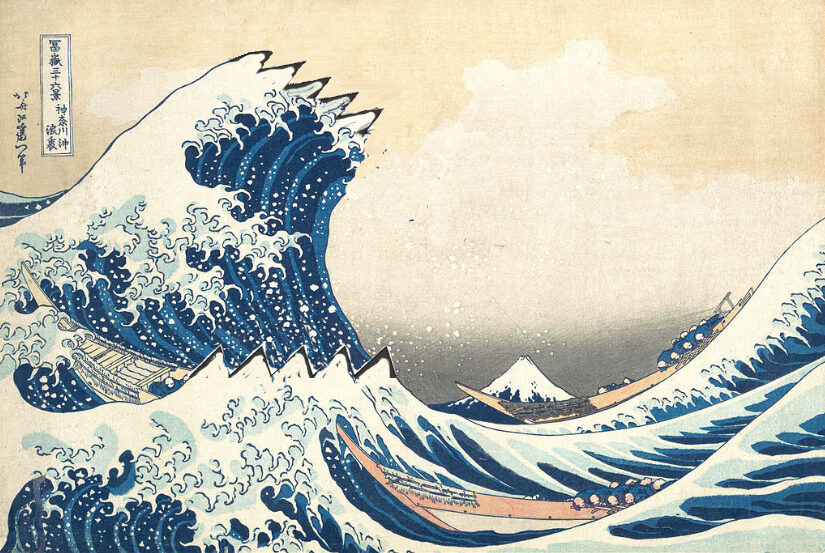
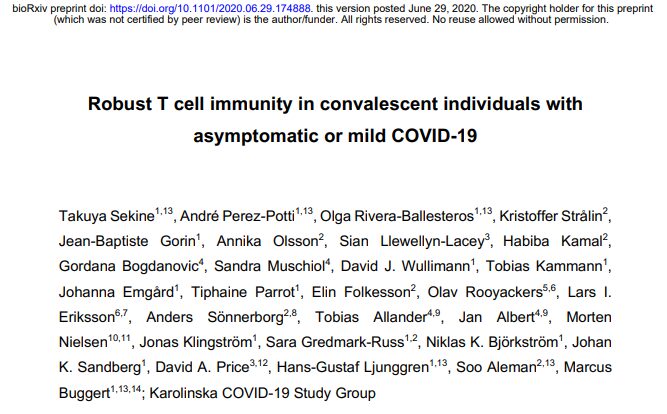
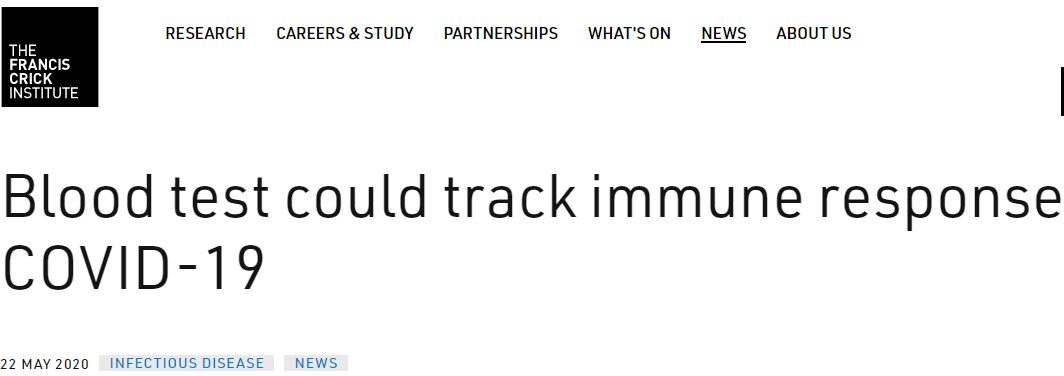
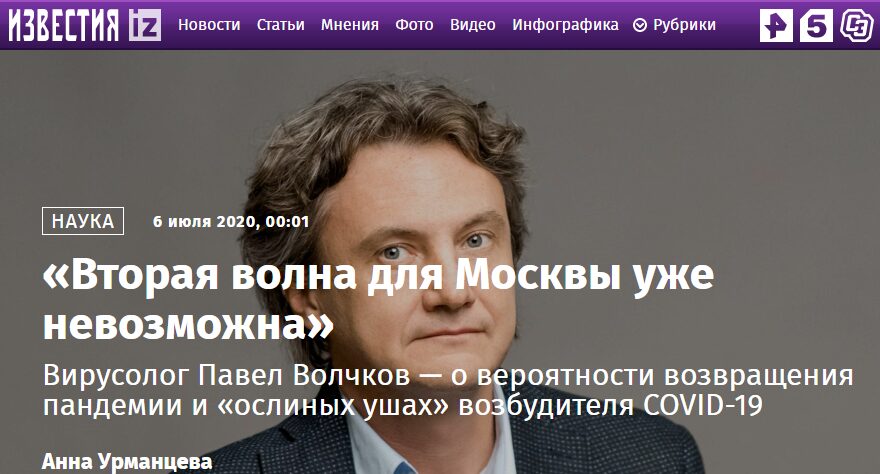
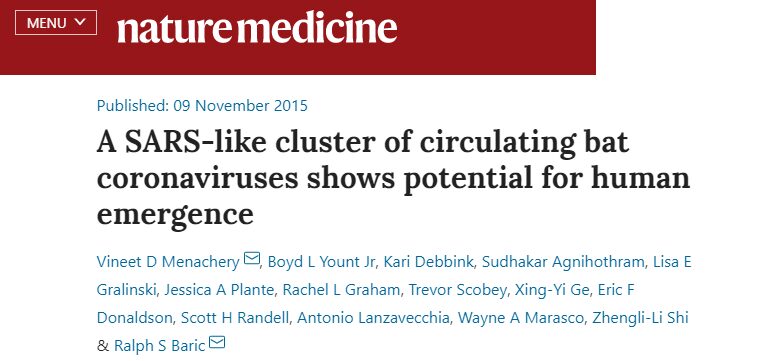
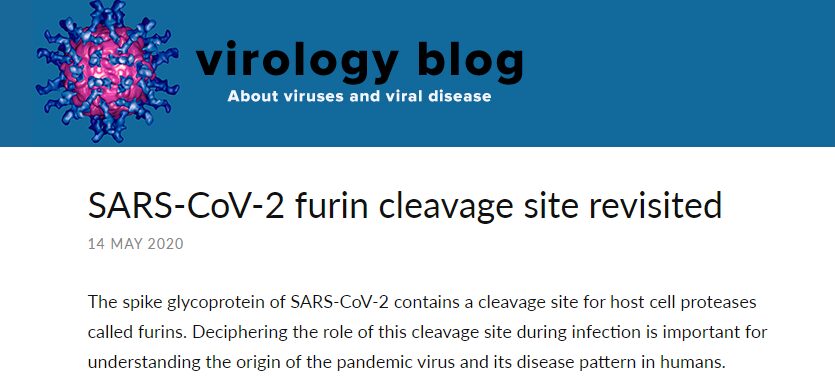
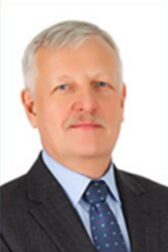
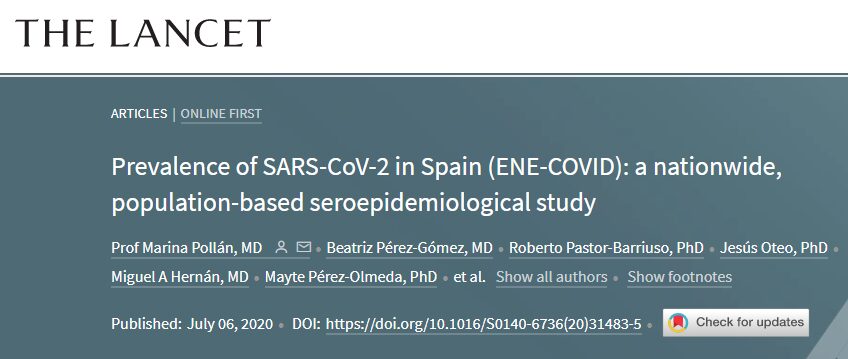



I came to the conclusion that the probability of the virus overcoming the interspecies barrier without human help (for example, accidentally eating a bat which is carrying SARS-CoV-2) is much less than the probability that there was help. By help, I mean prolonged cultivation of the virus in the laboratory, the introduction of amino acid modifications, experiments to infect human cells if possible. All this is described in the same famous article of 2015 (Nature magazine, November 9, 2015). Also in support of this hypothesis is also the location of the city of Wuhan.
Fauci was paying the lab in Wuhan $1 million per year to do this research/create the virus I have read in a couple of articles lately, I wonder if that info is true.
I'm still not convinced it was made in the usa and carried to china by military games athletes, sounds a bit iffy.😁